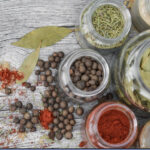When a family has a baby, it is a great joy and at the same time a responsibility for its life and health. The basis for the future immunity and well-being of the infant is the diet. Usually the best and most natural for the child is the mother’s breast milk, which naturally has an appropriately balanced composition. However, there are situations in life, when you have to transfer the child to artificial feeding. Panic in such circumstances, of course, do not, you just need to carefully study the composition of the formula. But the child in any case should be a balanced diet, which satisfied the daily requirement of the body in energy and maintain an optimal balance of trace elements and vitamins. With a balanced diet, the body normally develops, grows, and works.
The main essence of artificial feeding is to compose the child’s diet based on the energy value of products. The body should receive proteins, fats, carbohydrates, vitamins, macro and micronutrients, and digestive enzymes. Also, a well-balanced diet involves the proper combination of salt and sugar in children’s diets.
Salt in a Child’s Diet
Scientists say that salt in moderation is good for the body. Whether it is needed in the diet of the child under a year is another matter.
Sodium contained in table salt participates in many metabolic processes of the body, is part of the internal organs, blood, bones, etc. And even a baby, as recommended by experts on child nutrition, a day should receive a certain amount of this mineral. Children from birth to 10 months of life need 0.2 g of salt per day, in the next couple of months the rate rises – 0.35 g. And the baby, which has already crossed the border of 1 year, should receive about 0.5 grams of salt per day.
But at the sight of these figures do not rush to run behind the electronic scales to measure a pinch of regular salt strictly to the milligram and sprinkle all children’s dishes. The source of salt for children is not the white, loose spice that is in the salt shaker.
The child receives salt in the beginning with the mother’s milk or formula, which contains it in its natural form. With the introduction of complementary foods, there are more of these sources – fruits, vegetables, cereals, meat, etc. Each of these foods includes a certain amount of salt, useful as opposed to the cooking salt we are used to eating. So you can not worry, if you will properly and balanced feed your child, his norm of useful salts he will get from natural products.
Sugar in a child’s diet
When we talk about children’s diet, the term “sugar” can be understood in two terms: natural and free sugar.
Natural sugar is simple carbohydrates, mono- and disaccharides found in fruits, vegetables, and some grains. Examples are sucrose, fructose, glucose, maltose. It also includes lactose from milk and dairy products.
Free sugars are mono- and disaccharides that have been added to food and beverages by the producer or consumer, as well as sugars found naturally in honey, fruit juices, syrups, and fruit concentrates. We should not count the amount of naturally occurring sugar in foods that are part of a healthy child’s diet. And it’s the free sugar that’s being restricted. After all, it interferes with the absorption of calcium, so it is not recommended sweetening baby kefir and cottage cheese, and its presence in large quantities can overload the kidneys, liver, and hormonal system of the child.
So always treat the choice of baby formula responsibly. Study their composition and their value. Many young parents recommend baby formula such as HiPP formula and Loulouka Formula. After all, these organic formulas have a composition adapted to breast milk and help children get all the useful vitamins and minerals for normal growth and development.




